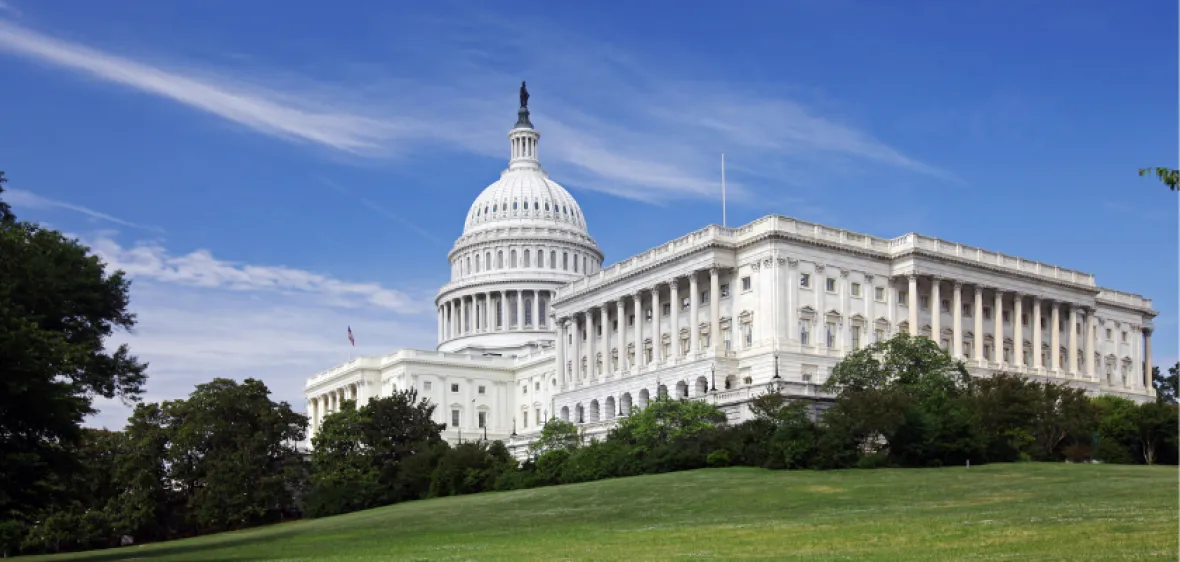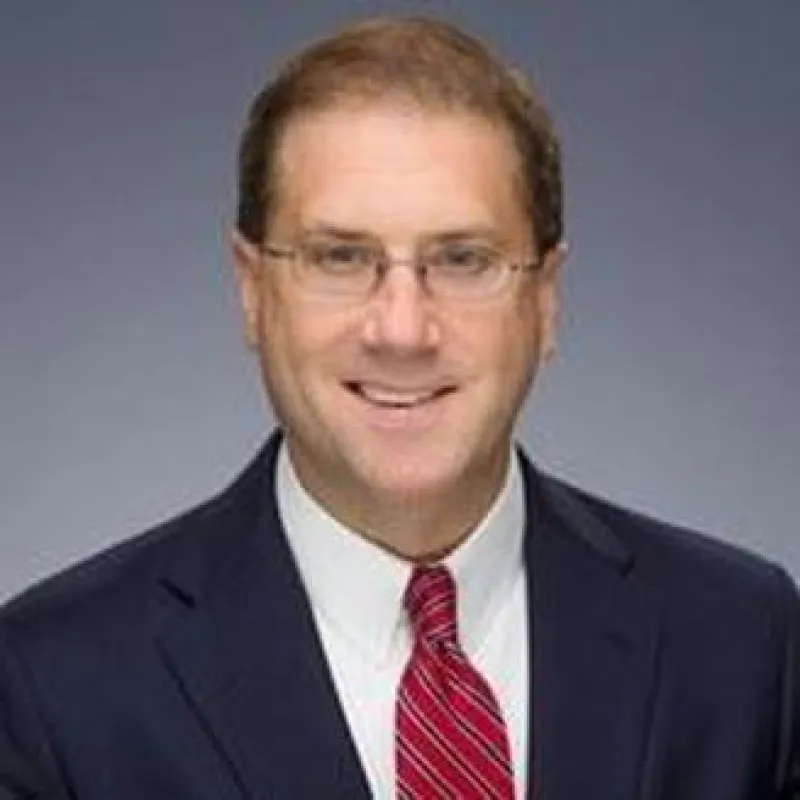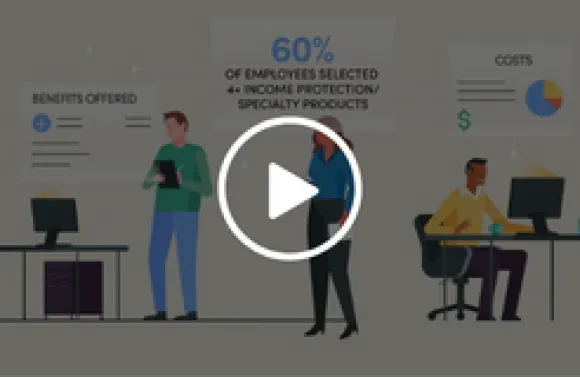
On Thursday, September 9, President Joe Biden announced a new national strategy to further combat COVID-19. In addition to other mandates, the plan calls on the Department of Labor’s Occupational Safety and Health Administration (OSHA) to develop an “Emergency Temporary Standard” rule that will require all employers with 100 or more employees to ensure their workforce is fully vaccinated or require any unvaccinated workers to produce a negative COVID-19 test at least once a week before coming to work.
The plan also requires the Centers for Medicare & Medicaid Services (CMS) to require vaccinations for employees in health care centers that receive Medicare or Medicaid reimbursement. Additionally, the plan requires vaccination for all federal executive branch workers, and well as for employees of federal contractors and subcontractors.
As part of our ongoing customer support for benefits administration and employee communication, we reached out to attorney and Capitol Hill insider Chris Condeluci for his perspective into the implications for employers. Here’s what he had to say when answering our questions.
When are we going to see more details about the vaccine mandate?
It is important to emphasize that a Presidential Executive Order (issued by any President regardless of political party) does not have the force of law. Instead, an Executive Order is a pronouncement of the Administration’s policy priorities, and the Executive Order directs the Federal Departments to issue regulations/guidance (or to undertake enforcement actions) to effectuate the policy priorities articulated in the Executive Order.
In the case of the recent vaccine mandate, OSHA must issue guidance detailing how this particular mandate will be implemented. Only then will we fully understand the scope of the mandate on, for example, employers with 100 or more employees, the penalties for non-compliance, and more detail on other matters like the rules governing paid leave for employees getting their vaccination.
At this point, we do not have a concrete timeline on when OSHA will issue implementing guidance, other than White House officials stating they expect guidance to be released “in the coming weeks.” Due to the complexity of these issues, and due to the concerns that have been raised by some employer groups and labor unions about the application of the mandate, I would be shocked if we see OSHA’s guidance before October 1 (but you can never-say-never).
Who will this mandate apply to? How will the mandate apply?
1. Federal Government as the Employer:
As you know, the Federal Government is itself an employer. As a result, the Federal Government is permitted to tell its Federal Government employees what they must do as a condition of employment. So here, the President is saying that every Federal Government employee MUST get a vaccine or disciplinary actions will be taken. Note, however, religious and disability-related exceptions to getting the vaccine will continue to apply.
2. Private-Sector Employers that Receive Federal Funds:
The Federal Government can compel private-sector employers that receive some form of "funds” from the Federal Government to do something as a condition of “contracting” with the Federal Government to receive these funds. For example, a hospital contracts with Medicare and therefore receives government funds. Also, an education institution contracts with the Department of Education to receive government funds in the form of grants. In these cases, the Federal Government is permitted to add a new condition to the contracts for receiving funds (e.g., the condition can say that employees must (1) get vaccinated or (2) get weekly COVID tests).
If the private-sector employer here chooses NOT to abide by this new condition, then this private-sector employer will lose the government funds that they’ve been receiving. This is not so much of a “mandate,” but rather a financial “stick.” In all likelihood, these private-sector employers are going to always agree to this new condition to continue receiving these government funds (and therefore, these private-sector employers will – like the Federal Government as an employer – require their employees to (1) get vaccinated or (2) get weekly COVID tests or face disciplinary actions). Note, I believe that the religious and disability-related exceptions to getting the vaccine will continue to apply here.
3. Private-Sector Employers NOT Receiving Federal Funds:
In general, the Federal Government CANNOT tell private-sector employers what they can and cannot do without some statutory requirement added to the law by Congress. Private-sector employers can VOLUNTARILY comply with this so-called mandate and require their employees to (1) get vaccinated or (2) get weekly COVID tests. But again, unless there is some sort of statutory authority that the Administration can look to, the Federal Government CANNOT compel a private-sector employer to require this of their employees.
Importantly, the existing statute that governs OSHA does give OSHA broad authority to develop “emergency safety standards” in cases where a workplace possesses “recognized hazards that are causing or are likely to cause death or serious physical harm to employees.” In this case, the existing statute allows OSHA to issue an “Emergency Temporary Standard” in the form of formal guidance if OSHA determines that “employees are exposed to grave danger from exposure to substances or agents determined to be toxic or physically harmful…and that such emergency standards are necessary to protect employees from such dangers.”
In this “Emergency Temporary Standard” guidance, OSHA is permitted to impose civil penalties (e.g., the $14,000 per violation that is being reported) on those employers that do NOT remedy their workplace that OSHA has determined possesses “recognized hazards that are causing or are likely to cause death or serious physical harm to employees.”
So now, the $14,000+ question is this: Does the existing statute that governs OSHA give OSHA the proper authority to develop the vaccine mandate outlined in President Biden’s Executive Order? In the end, I believe a court of law (possibly the Supreme Court) will tell us the answer.
What should employers do now?
Be patient.
It’s too early to begin responding, as the Executive Order has no force of law until OSHA issues “implementing” guidance. As stated, we likely won’t see OHSA’s guidance for a couple of weeks. Even when we do see guidance, I fully expect that this “Emergency Temporary Standard” will be swiftly challenged in a court of law.
Based on my read of the statutory authority that OSHA will be relying on to “implement” (and put teeth to) this particular mandate, I’m skeptical that a court of law green-lights OSHA’s guidance. In other words, I believe this OSHA guidance will NOT be allowed to apply to private-sector employers NOT receiving Federal funds (but again, you can never-say-never). However, Federal Government employees CAN be required to require their employees to (1) get vaccinated or (2) get weekly COVID tests (again, with religious and disability-related exceptions to getting the vaccine continuing to apply). And, the financial “stick” (discussed above) CAN be used to get private-sector employers receiving Federal funds to similarly impose this mandate on their employees.
From the Benefitfocus Team
Regardless of if/when the OSHA rule goes into effect, it’s likely that large employers will continue to implement measures to encourage vaccination among their workers, including paid time off for vaccination appointments, financial incentives and health insurance premium surcharges.
Benefitfocus is currently working with our customers on the various ways in which we can help them with their vaccination and/or testing strategies, specifically those that have implications for benefits administration. Stay tuned for more information on this!
Additionally, many Benefitfocus customers have taken advantage of our Health Insights solution to navigate the impacts of the pandemic. Health Insights offers in-depth and comprehensive tracking of relevant health care information, such as COVID-19 related claims and spending, which enables employers to see how their COVID-19 costs trend over time and are impacted by various measures—including mandates, incentives, surcharges, etc.
For more insight into how employees and employers are responding to the vaccine mandate, check out our recent COVID-19 survey.

